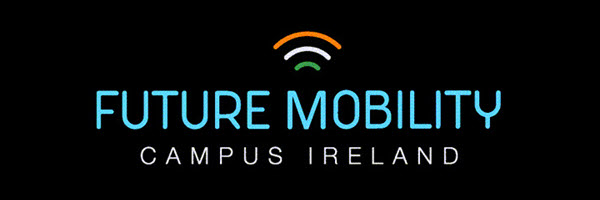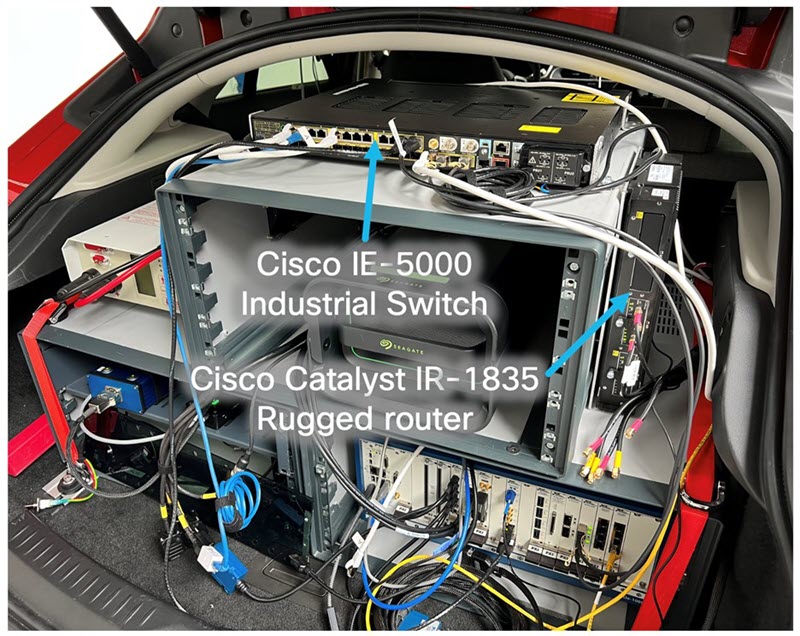- I recommend the Pixel 9 to most people looking to upgrade - especially while it's $250 off
- Google's viral research assistant just got its own app - here's how it can help you
- Sony will give you a free 55-inch 4K TV right now - but this is the last day to qualify
- I've used virtually every Linux distro, but this one has a fresh perspective
- The 7 gadgets I never travel without (and why they make such a big difference)
Future Mobility Campus Ireland, accelerates innovation in smarter, safer, more sustainable transportation

Connected, Autonomous, Shared and Electric (CASE) mobility technologies are gaining increasing momentum. I have had the pleasure of working with Russell Vickers, CEO, and Dr. Wassim Derguech, COO, at the Future Mobility Campus Ireland (FMCI), since its inception to accelerate innovation in this area. FMCI was born out of a consortium of industry partners across the automotive and IT landscape—including Jaguar Land Rover, GM, Valeo, Redhat, Seagate, as well as Cisco. Another key partner is Shannon Group, who provides the physical space that allows FMCI to innovate with its customers – close to Shannon Airport on the west coast of Ireland.
The FMCI testbed brings together many of Cisco’s IoT solutions for connected roadways and intersections solutions, with innovations focused on improving public safety and operational efficiency. It includes Cisco Ultra-Reliable Wireless Backhaul radios that communicate with the vehicles, LoRaWAN gateways that connect to smart street lighting, traffic light systems, and Cisco Meraki outdoor cameras, and more, as described below. All network traffic enters the network via a Zero Trust posture. This means that cybersecurity starts right at the edge of the network.
Russell, recalls, “Cisco worked with us, as a key technology partner, right from the beginning, to help us create an architecture that would enable FMCI to deliver the cutting-edge scenarios our customers need – all of which is underpinned by the latest generation of networking.”
Flexible networking
Russell knew he wanted a network that could offer customers a variety of connectivity options; including wired copper and fiber, Wi-Fi, LoRaWAN, 4G, 5G, V2X, and specialized seamless 5GHz wireless for vehicles within the Shannon Freezone business park where FMCI is located, and I am delighted to report that Cisco was able to help FMCI achieve these objectives.
“A software-defined network was critical for us”, says Wassim. “The ability to drive business intent into the network, with APIs allowing us to be agile, to create and destroy network overlays and segments in a highly automated way; Cisco Software-Defined Access does exactly this.”
Cisco Software-Defined Access (SDA) managed via Cisco DNA Center, is a great fit for FMCI. It creates network segmentation at L2 and L3, right from the data center to the roadside. With Cisco Catalyst 9000 switches and Wi-Fi access points in the carpeted space, and Cisco Catalyst IE3400 Rugged Series Switches at the roadside, providing connectivity and often Power over Ethernet (PoE) too, for everything at street level.
Remote access to the mules to bring in remote experts
‘Mule’ is the rather undignified name, used in the industry, to describe highly customized and specialized test vehicles. FMCI currently has two mules: a Jaguar I-PACE and a Land Rover Defender.
While it was important to have VPNs over the cellular connections, FMCI needed a VPN-less way of allowing their customers to securely connect directly into the mules. “Customers may be onsite with us here in Shannon, Ireland, but many are remote and/or they bring in remote experts”, says Wassim. He continues, “we wanted the security of a VPN, as we’re often helping customers with commercially sensitive research and development, but without the complexity and setup overhead of a traditional VPN.” To address this need, Wassim and I set up Secure Equipment Access with the Cisco Catalyst IR1835 Rugged Series Router managed in Cisco IoT Operations Dashboard. This allows FMCI to enable secure remote access sessions, with specific equipment in the mule vehicles, over HTTP/S, SSH, RDP & VNC, for selected internal or external users. And those users can connect from anywhere in the world with just a web browser!

Both mules needed identical networking setups to include:
- A rugged router that could connect to both 4G and 5G simultaneously. The router needed to be able to create a Wi-Fi bubble within the vehicle, build VPN tunnels back to the FMCI corporate network, and also communicate with the vehicles themselves via the CAN bus. They selected the Cisco IR1835, which was a perfect fit.
- A switch that could operate fanless and still deliver 10Gbps port performance (a single automotive camera generates over 7Gbps of raw traffic!), and that could help propagate precision time (IEEE-1588 PTP) throughout the vehicle, to maintain synchronization across the specialized automotive equipment. To address these requirements, they selected the Cisco Industrial Ethernet 5000 Series Switch.
Everything, and more
Russell told me, “We needed multi-access, software-defined, and robust cyber security. Cisco has delivered, and I’m looking forward to our continued partnership.” I can only agree and am really excited by the innovative work FMCI are doing and also about what is to come.
And today I am proud to be celebrating the formal launch and opening of FMCI, with Tánaiste (Deputy Prime Minister) of Ireland—Leo Varadkar TD, Michael Timmeny, SVP & Cisco’s Chief Government Strategy Officer, and Shane Heraty, Regional Director for Cisco Ireland and Scotland.
FMCI was founded with the sole purpose of creating and delivering future mobility testbed facilities to stimulate research, development and innovation in the area of Connected, Autonomous, Shared and Electric, including Connected and Autonomous Vehicles, in Ireland. Their Cisco network provides a multi-access, segmented and secure fabric to directly support this innovation. And I am delighted to have been part of the Cisco team that has helped FMCI achieve these goals.
Learn more
Share:

